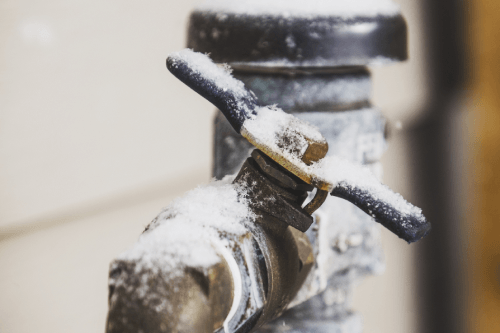Key Approaches for Preventing Frozen Pipes in Winter
Key Approaches for Preventing Frozen Pipes in Winter
Blog Article
The publisher is making several good pointers regarding Winter Plumbing Precautions: Preventing Frozen Pipes as a whole in this great article beneath.

Winter can ruin your plumbing, especially by freezing pipelines. Right here's exactly how to avoid it from occurring and what to do if it does.
Introduction
As temperature levels decline, the risk of icy pipes rises, possibly bring about pricey repair services and water damage. Recognizing just how to avoid frozen pipelines is vital for homeowners in cold environments.
Understanding Frozen Pipes
What triggers pipelines to ice up?
Pipelines freeze when exposed to temperature levels below 32 ° F (0 ° C) for prolonged durations. As water inside the pipes ices up, it increases, putting pressure on the pipe walls and possibly triggering them to burst.
Risks and damages
Frozen pipes can bring about supply of water disruptions, home damage, and costly repair work. Burst pipelines can flood homes and cause extensive structural damages.
Indicators of Frozen Water Lines
Recognizing frozen pipelines early can prevent them from breaking.
How to recognize icy pipelines
Search for decreased water circulation from faucets, uncommon odors or sounds from pipelines, and visible frost on revealed pipes.
Avoidance Tips
Protecting at risk pipes
Wrap pipelines in insulation sleeves or make use of warm tape to shield them from freezing temperature levels. Concentrate on pipes in unheated or outside locations of the home.
Home heating methods
Maintain interior spaces effectively warmed, especially areas with plumbing. Open cupboard doors to enable cozy air to circulate around pipelines under sinks.
Protecting Outside Plumbing
Garden hose pipes and outside taps
Detach and drain pipes garden hose pipes before winter. Set up frost-proof spigots or cover exterior faucets with shielded caps.
What to Do If Your Pipes Freeze
Immediate activities to take
If you believe frozen pipelines, keep faucets available to eliminate pressure as the ice thaws. Use a hairdryer or towels soaked in hot water to thaw pipes gradually.
Long-Term Solutions
Structural changes
Take into consideration rerouting pipelines away from exterior wall surfaces or unheated locations. Add additional insulation to attic rooms, basements, and crawl spaces.
Updating insulation
Invest in premium insulation for pipes, attic rooms, and walls. Appropriate insulation assists maintain constant temperature levels and decreases the risk of icy pipes.
Verdict
Stopping frozen pipes requires aggressive measures and fast responses. By comprehending the causes, indications, and preventive measures, homeowners can shield their pipes during winter.
5 Ways to Prevent Frozen Pipes
Drain Outdoor Faucets and Disconnect Hoses
First, close the shut-off valve that controls the flow of water in the pipe to your outdoor faucet. Then, head outside to disconnect and drain your hose and open the outdoor faucet to allow the water to completely drain out of the line. Turn off the faucet when done. Finally, head back to the shut-off valve and drain the remaining water inside the pipe into a bucket or container. Additionally, if you have a home irrigation system, you should consider hiring an expert to clear the system of water each year.
Insulate Pipes
One of the best and most cost-effective methods for preventing frozen water pipes is to wrap your pipes with insulation. This is especially important for areas in your home that aren’t exposed to heat, such as an attic. We suggest using foam sleeves, which can typically be found at your local hardware store.
Keep Heat Running at 65
Your pipes are located inside your walls, and the temperature there is much colder than the rest of the house. To prevent your pipes from freezing, The Insurance Information Institute suggests that you keep your home heated to at least 65 degrees, even when traveling. You may want to invest in smart devices that can keep an eye on the temperature in your home while you’re away.
Leave Water Dripping
Moving water — even a small trickle — can prevent ice from forming inside your pipes. When freezing temps are imminent, start a drip of water from all faucets that serve exposed pipes. Leaving a few faucets running will also help relieve pressure inside the pipes and help prevent a rupture if the water inside freezes.
Open Cupboard Doors
Warm your kitchen and bathroom pipes by opening cupboards and vanities. You should also leave your interior doors ajar to help warm air circulate evenly throughout your home.

I have been very enthusiastic about How to prepare your home plumbing for winter weather and I am hoping you enjoyed my entry. Enjoyed our content? Please share it. Let others check it out. Many thanks for going through it.
Call Today Report this page